
10 minute read
The Art of Looking
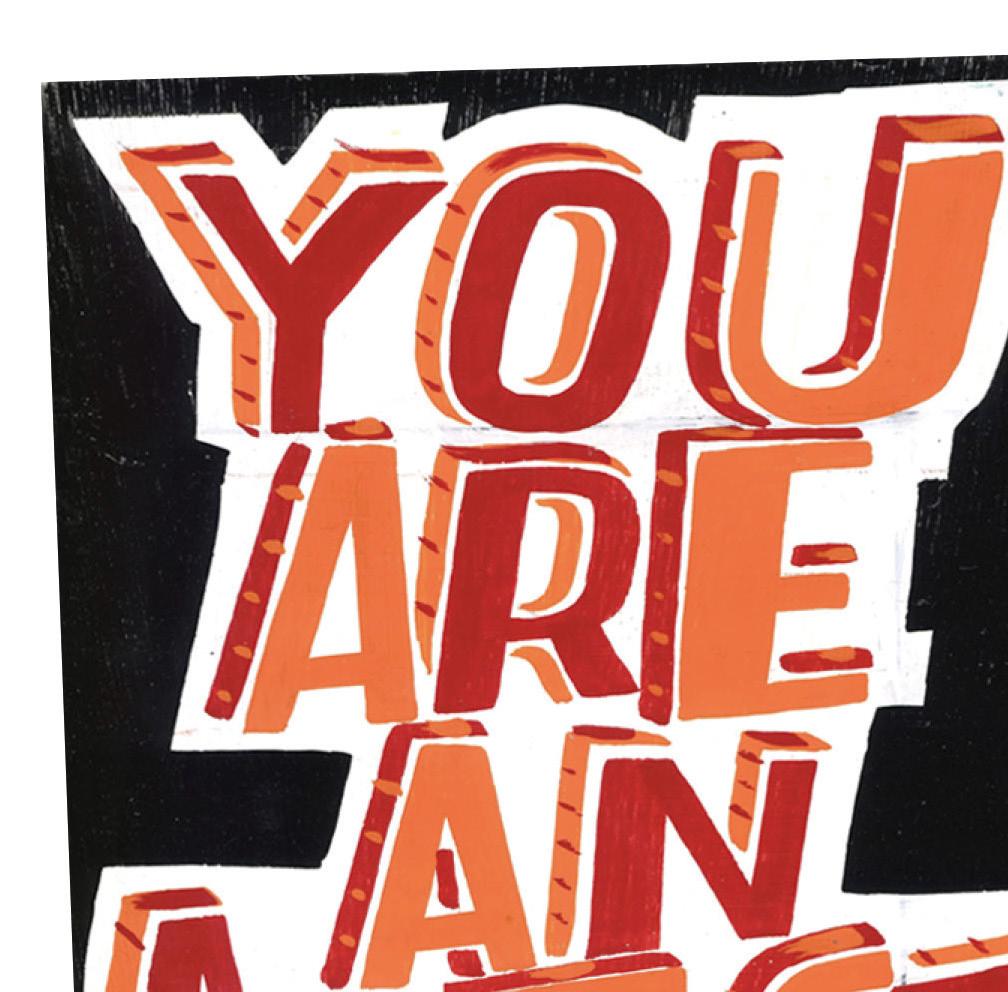
You are all artists, and the world is your art school, says Bob and Roberta Smith. You just have to learn to look at it the right way – and confront impossibilities
Discernment
Art is looking. Looking at the world with concentration and humanity, looking at language, and looking at forms of art itself. It requires an understanding that saying something is one thing, and the form in which you say it is something else.
Sometimes the form in which you say something is indeed the thing you want to say. Either way, art is not so much what you say as how you say it. Your reaction to the world is also a part of the world as a whole. By off ering something to the world you are being critical, while making a contribution.
Depicting aspects of the world is the mainstay of your new activity, but you are also now participating in it. Deciding what the world needs is important. This can only be done through looking.
Looking is political. Looking is about governance. We look at the world and we make judgments about what we see. We all see things diff erently, and our diverse viewpoints are sacred.
I am not a religious person, but I believe that how we see things is all we have. We have a responsibility to look carefully with sensibility, sensitivity and understanding.
Illumination
Caravaggio’s great innovation was to shine light into paintings. The light he shone represented the light of the voice and stewardship of God. We talk about synaesthesia. It’s here again. Light is the voice of God. In the paintings of Caravaggio, light might be shining to reveal something pretty horrifi c – John the Baptist’s head on a plate, for example. Nevertheless, it is always light that allows human beings to see.
Looking can be a tool for us to say, “Oh I agree with this. I celebrate this. Let’s have a party.” Often, however, it is the act of looking that leads an artist to be sceptical of the status quo.
On a recent episode of BBC Radio 4’s Front Row, I was asked if artists were getting more political. I answered that this was the wrong question. In the UK, we are living through polarised political times, and the fi eld of art itself is becoming political.
Our current government has spent 10 years telling children that art as a subject is not worth studying. That makes art political. Artists maintain the right to be sceptical. That’s why so many artists living in repressive regimes end up incarcerated.
In 2018, protesters against fracking and those speaking out against enforced extradition were charged under terrorism laws. These protests had more in common with pacifi sm than terrorism. None of the protesters looked like they would hurt a fl y. They were probably vegans. There was no need for such a heavy response to their actions other than to frighten others. Protesters were being used as examples. In the 17th century, the Tolpuddle Martyrs were deported from Dorset to Australia for the same reasons. They wanted to form a union of agricultural labourers but were charged under conspiracy laws. Their extradition was a political gesture to tell destitute workers to think again before they got together to ask for proper pay and conditions.
Why, as an artist, am I so concerned about this? Well, it’s because protesting and being an artist, a journalist, a novelist and a poet are all about free speech. We are all engaged in a game of “free expression”. But really, it’s not a game – it’s about defending democracy.
Mapping
In the 1960s, psychologist Tony Burzon devised the “mind map”,
or “spider diagram”. This was drawing from listening. Burzon was trying to synthesize the lectures he was listening to. Mind maps understand drawing as a way of working things out and assimilating ideas.
Drawing is a first chance. This is why it’s so important in schools. Drawing can be a rehearsal as well as a result. Without drawing we drive down cul-de-sacs. Without drawing we fail to think through our plans. Devise and conceive of the world through drawing. Looking through drawing allows us to collect evidence and amass information.
Interpretation
Eighteenth- and 19th-century landscape painters like Turner
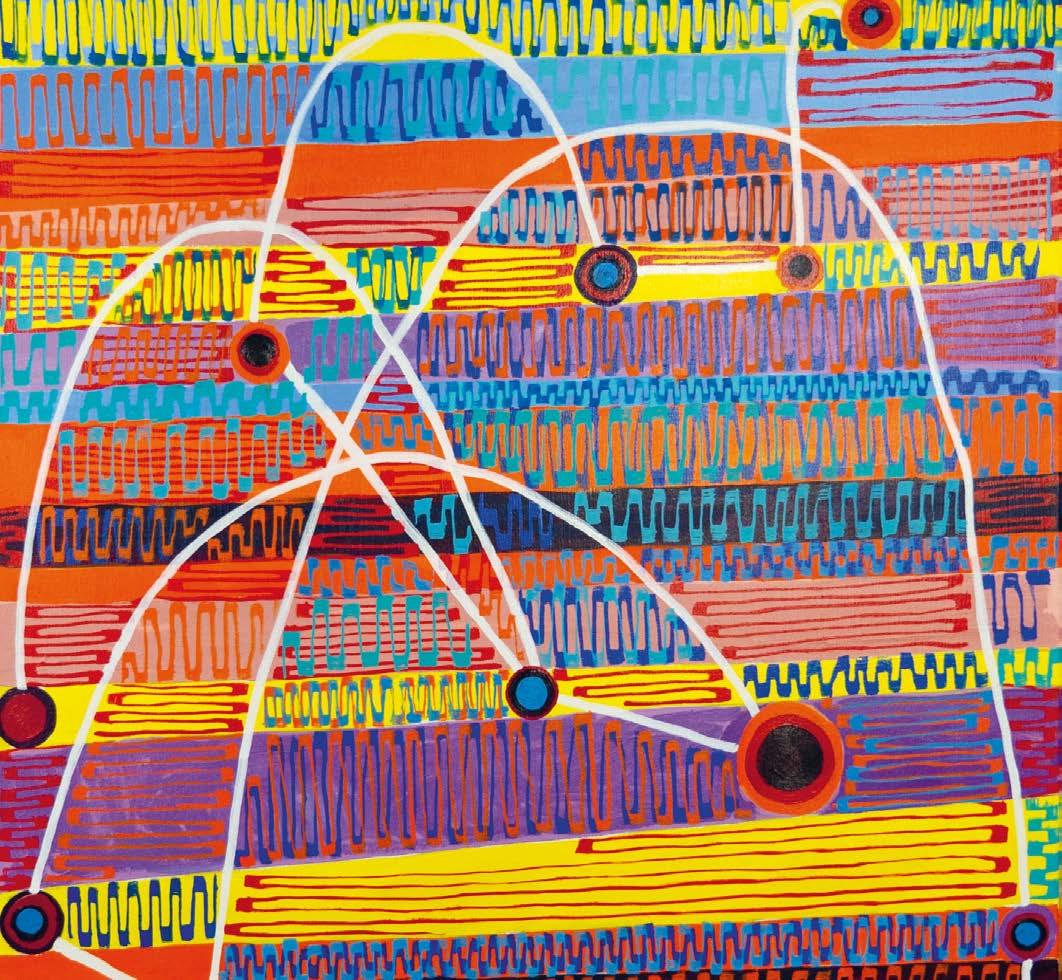
drew “en route” in sketchbooks. They were drawing in the landscape; the sketchbooks were notebooks. Turner’s and Constable’s sketchbooks are works in both text and image. They gave the artists lots of information, but not all the information that was needed to make larger paintings. Rather than providing a blueprint, the drawings or sketches gave a basis for further improvisation. The gap between the drawings and the finished paintings allows us to witness the artist’s interpretation.
Here we have a key equation:
Interpretation = looking based on facts + invention based on improvisation
This equation enables human beings to make and design objects, develop ideas and improve our situation. It creates the space for creativity and is the architecture for what we like to think of as artistic freedom.
Using this loose equation, artists give themselves authority, through looking and researching, to extemporize and innovate.
Beauty
The world is horrible, and the world is a place of – unimaginably, tantalisingly – sublime beauty. You can make an ugly painting of something beautiful (you probably have done already), and if you are a great artist you can make something beautiful out of something horrible (like that portrait of John the Baptist’s head on a plate by Caravaggio). But artists can also make beautiful images of beautiful things. The idea of the “sublime” is wrapped up in this dialogue. Turner gave it a go. Art is about confronting these impossibilities.
“Don’t replace cannot with don’t replace cannot with don’t...” You cannot paint a sunset, you cannot paint heat, you cannot paint a frozen lake, and you cannot paint God. It is impossible to paint God, even if you believe in him. Turner’s images of sunsets are not sunsets. They are not even remotely like sunsets. They are flat, quotidian bits of wood and canvas with paint on. Artists are energetic, but we can’t create energy.
The sublime is the gap between what we can see and what we can do – the “real world”. An artist’s skill is to make impossibility visible. The literal-minded iconoclast’s crime is to have no sense of the joys of ambiguity or irony. Impossibility is beautiful.
Literal-minded iconoclasts, who have smashed up monasteries and scratched out icons, blown up Buddhas and wrecked Palmyra, want to say: “Not only can you not make an image of God, but human beings cannot make things beautiful.”
That’s where they are wrong. Not only can human beings make beautiful things, the desire to make beautiful things is both deeply human and deeply beautiful in itself. For those who believe in a god, the act of making images and artefacts is a prayer. For those of us who don’t believe in any god, the universe is no less magical and mysterious. Art is our way of expressing our wonder.
A unique challenge is to paint a beautiful thing that is “impossible” to represent. Above is a cloud that I saw briefly through the window of a train bound for Basel. I had just eaten a delicious meal of slowcooked lamb and dauphinoise potatoes in a restaurant called Le Train Bleu in Paris. After a nap on the train I awoke to see an amazingly tall, triangular cloud. I reached for my sketchbook and drew. The painting was made in my front room in Leytonstone. It’s nothing like the cloud I saw.
Looking is governance. It needs light. Just as Caravaggio’s art needed light, so art in the 21st century needs light and freedom if it aspires to be true.
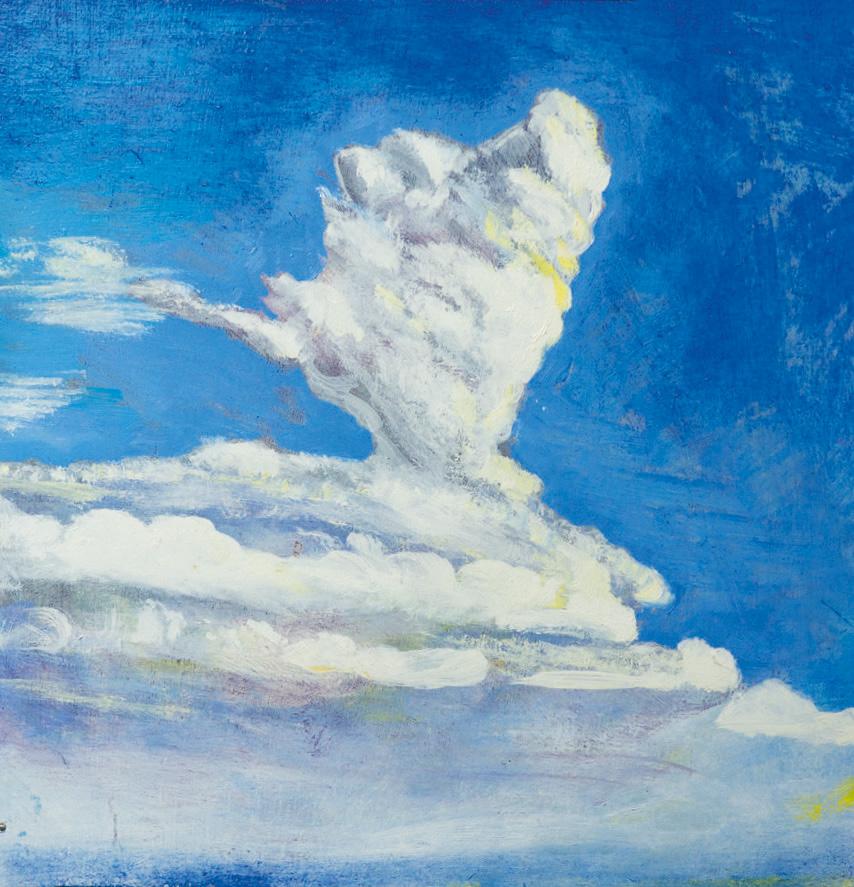
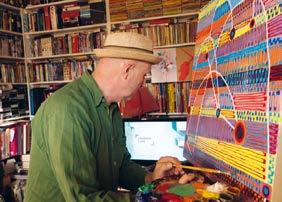
How about this…?
Set up an easel in front of the TV
Look at shifting images on the TV and attempt to make a painting from them. This exercise is about impossibility, but it is also about looking and making judgments.
After an hour of attempting this, you will have produced something. That ‘something’ will be the result of your decisions about what was important visually while you were looking.
This is an extract from Bob and Roberta Smith’s You Are An Artist, published by Thames and Hudson, £14.99. Save 20% off the cover price when you enter the code ARTISTS20 and purchase from www.thamesandhudson.com
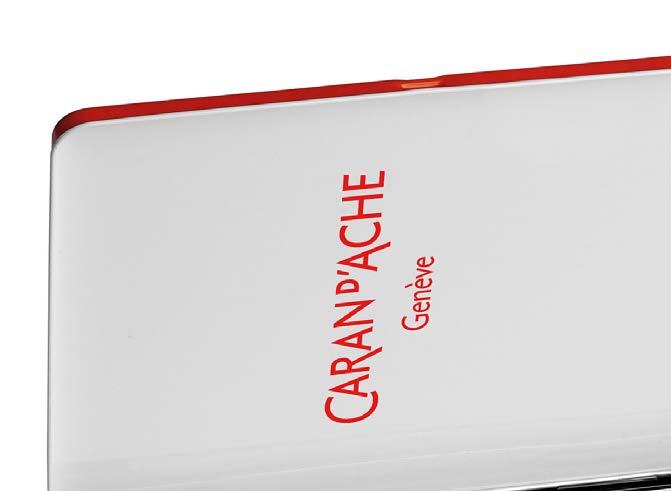

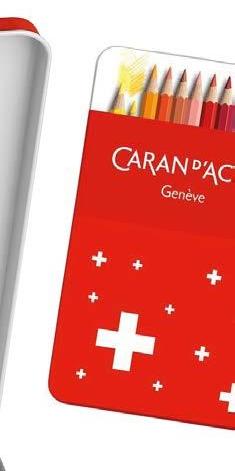
versatile and long lasting, high versatile and long lasting, high pigmented colours and made with a softer material than the colour pencils, but denser than traditional wax pastels or crayons. Suitable for a range of techniques, both dry and with a wash applied – or a combination of both. Swisscolor pencils are available in metal boxes of 12, 18 or 30 and cardboard boxes of 12 and 18. In addition, the Swisscolor water-soluble pencils are available in a metal box of 40 assorted colours. The Swisscolor wax pastels come in packs of 10 and 15 water-soluble and waterA taste of "Made resistant half pastels. The wax pastels are available in hanging cardboard boxes only. The Swisscolor Range is ideal for in Switzerland" creative beginners and hobbyists. The range is available from all good artists’ material and stationery stockists. Prices for the water-resistant colour pencils and pastels range from £6.49 to £32.99 The Caran d'Ache "Totally Swiss" Swisscolor RRP, while the water-soluble colour range pays tribute to its native country pencils and pastels are available from £7.99 to £49.99 RRP. Further to the success of the soft, yet strong 2.8mm lead and Caran d’Ache is 100% Swiss made. Swisscolor water-soluble is available in 40 water-soluble For more information and stockists, colour pencils, Caran d’Ache and 30 water-resistant bright, please contact Jakar International has introduced a water- intensive colours. E: info@jakar.co.uk resistant counterpart to Both colour pencils have T: (020) 8381 7000 T: (020) 8381 7000 complete the collection. high pigment concentration www.jakar.co.uk www.jakar.co.uk This means you can pick up for economical use and good for economical use and good colour pencils in this range lightfastness for drawing, without having to decide sketching and colouring and in sketching and colouring and in whether to work with the case of the water-soluble the case of the water-soluble water-resistant or water- pencils, also for wet application. pencils, also for wet application. soluble colour pencils. The water-soluble colour pencils The water-soluble colour pencils The colour pencils and wax pastels can also create and wax pastels can also create are made from cedar amazing watercolour eff ects. amazing watercolour eff ects. wood harvested from The wax pastels are available in The wax pastels are available in FSC-certifi ed, managed half lengths in both water-soluble half lengths in both water-soluble forests. This range has a and water-resistant. They are and water-resistant. They are
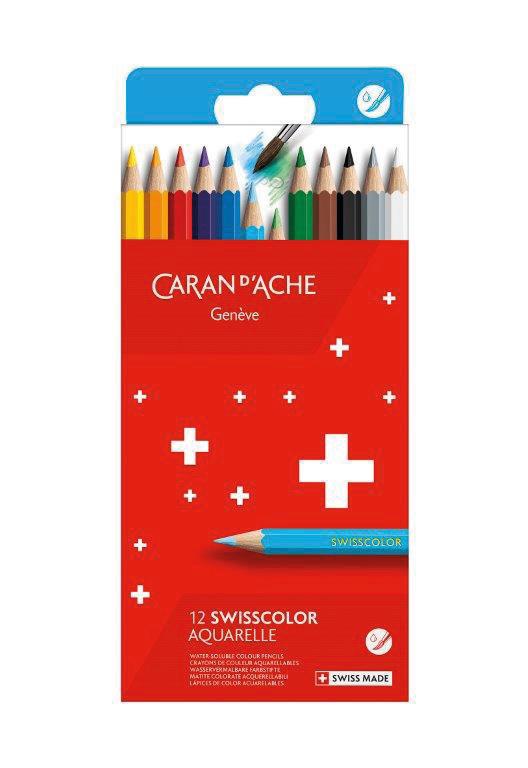


SWISSCOLOR

Discover Swisscolor: colour pencils with a classic Swiss desi for crea ve pursuits that the whole family will enjoy. Available with water-soluble or permanent lead, these 100% Swiss-made colour pencils are ideal for colouring and drawing enthusiasts of every age.
Caran d’Ache Swiss Made Excellence since 1915

carandache.com






